less is more —
Put off by Gloomhaven’s bulk? This could be for you.
Dan Thurot
–
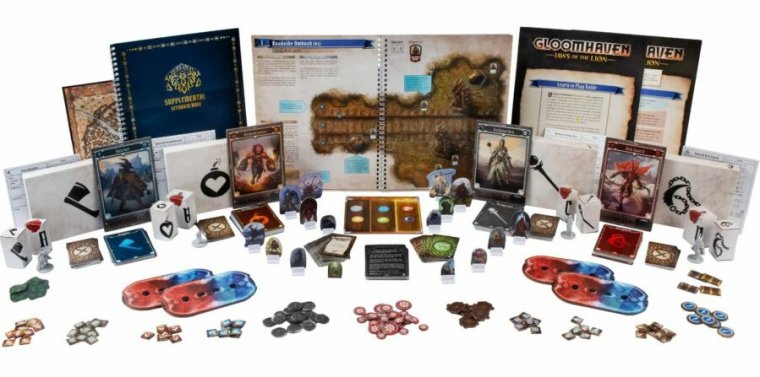
Enlarge / There’s still a lot of stuff in this box.
Cephalofair Games
Welcome to Ars Cardboard, our weekend look at tabletop games! Check out our complete board gaming coverage at cardboard.arstechnica.com.
There’s a reason Gloomhaven (read our 2017 review) is so popular. There’s also a reason why half of my friends who own a copy have opened it once, stared in despair at the contents within, and loosed a timid box-fart as they reassembled the package. “More is better!” can be true, especially when it comes to fighting your way through a dungeon. “More” means more monsters, more classes, more loot—even additional varieties of stonework decorating the corridors. It also happens to mean, you know, more. More to learn. More to remember. More to sort and keep sorted. Gloomhaven basically defines “more.”
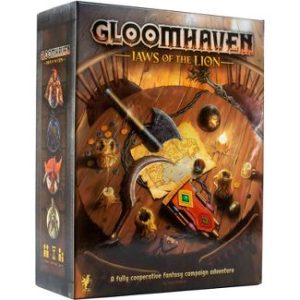
But now there’s Gloomhaven: Jaws of the Lion, the largest box to ever feel small. With only four classes, a single (mostly) linear campaign, and some clever quality-of-life improvements, this is Isaac Childres’s attempt to make a Gloomhaven for the rest of us. (Or the rest of you, since I played Gloomhaven until I was well and truly sick of it.)
How does Childres go about streamlining a game so monolithic that it once bestowed sentience upon a chimp? The answer is: easier passage into the game systems, fewer components, and a more focused quest line. Let’s take those in turn, because there’s more to each than you might think, including some drawbacks you may want to consider if you’re already curious about diving into Gloomhaven.
Tutorials get a bad rap. I’m speaking mostly of video games, where tutorials have been a staple ever since we collectively decided we weren’t going to read the manual anymore. The problem is twofold: either the game belabors the stuff we already know, like how to look around and click to shoot, or it fails to really dissect all the little subsystems that make the game purr. A good tutorial walks a tightrope between talking down to us like we’ve been living in a cave for the past fifteen years and assuming we hold a PhD in Interpreting Game Design Intentions. Yes, I know how to move the mouse. No, I don’t know why my king is in love with his biological sister. Meet me halfway here, game.
Jaws of the Lion is one of a few modern board games to try a tutorial. For the most part, this is a success. The original Gloomhaven didn’t exactly throw its players into whitewater rapids, but “deep end” wouldn’t be an overstatement. Here, the focus is squarely on the good stuff: the game’s novel card system rather than, say, the fact that you lose hit points until you fall over.
Every turn is about picking two of your hero’s cards. These cards determine the order you’ll move in, both relative to your fellow adventurers and the enemies crowding the table, as well as the moves and attacks you’ll deploy. The rub is that you’re required to use the top half of one card, usually an attack or a spell, and the bottom half of the other card, which lets you reposition yourself on the board. That might sound breezy, but the game quickly teaches you that spent cards are discarded, narrowing your options until you’re forced to take a breather.
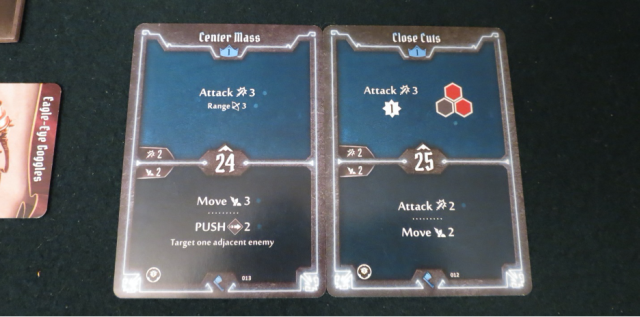
Enlarge / Gloomhaven’s card system has always been one if its main draws. Get it? Draws?
Dan Thurot
Each of these concepts is taught over the course of the first few scenarios. First, you learn how to pair cards to move and attack, then how to navigate your environment, manage the decks that regulate enemy actions, charge up elements to boost your moves, and finally how to square off against a miniboss. New cards and concepts trickle out with each fight, adding options without swamping you. Where the first scenario functions almost like punching those dummies that fall over only to pop back up into your face, by the sixth scenario you’ll have a solid handle on nearly everything you’ll need to know to play Gloomhaven.
Here’s the good news: it works. After answering hundreds of rules questions on the BoardGameGeek forums, Childres understands which concepts are second nature and which require reinforcement. The flipside is that this isn’t only a tutorial for the game’s rules. It’s also a tutorial for how Jaws of the Lion ought to be played. As in, by a single consistent group. Ideally one that happens to be patient enough for the game’s particularities, like choosing when to rest and who will breach that next door. Oh, and you should be fine playing the same character for a very long time.
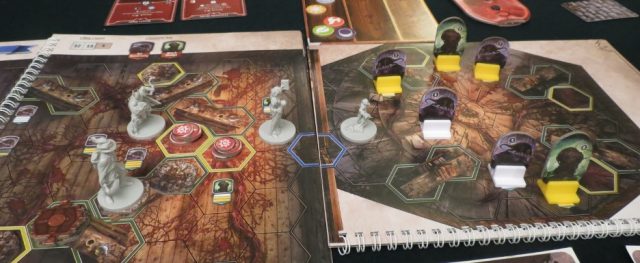
Enlarge / The campaign book supplies the maps, with a supplemental book for the big ones.
Dan Thurot
That last point is one of Jaws of the Lion’s biggest departures from Gloomhaven’s big box, and it bears some explanation. At first glance, this is standard save-the-city fare. You’re big damn heroes, there are big damn monsters, and we all know the rest. What sets the game apart from its kin isn’t only its card system, but also how it approaches its characters, all of which are refreshingly imaginative.
My character was the Hatchet. Tall, furry, and horned, the Hatchet seems like your standard melee bruiser. Except he isn’t. He’s a ranged warrior who throws hand-axes, tomahawks, cleavers, mattocks, and other hefty bladed implements whose names I’ve forgotten, often striking multiple targets in the same turn. More importantly, he strikes hard, like he’s dealing melee damage instead of flinging stuff around the room.
Over time, the Hatchet grows even more interesting. He has a favored blade that can be stuck into a large monster for bonus damage and then cause even more bonus damage every turn until the monster dies and the Hatchet reclaims his favorite. He also has a supply drop, which is akin to throwing a healing crate into an opponent’s head so it can rebound to heal a friend. Rather than playing the ranged warrior trope straight, he has tricks and spells of his own, all of which mark him as a capable fighter in multiple respects.
And it’s a good thing I liked playing as him, because Jaws of the Lion only provides four heroes. It’s a slight spoiler to say precisely how many classes were in the original game, so suffice it to say there were more, with a retirement system that let players swap out their character for someone else mid-campaign. Like a few of Gloomhaven’s other ideas, this was sometimes cumbersome—one of my friends had a retirement goal he never seemed capable of meeting—but it put the game’s dedication to variety front and center.
By contrast, Jaws of the Lion is necessarily pared down. Don’t get me wrong, there are still plenty of monsters to slay and maps to explore. In fact, gone are map tiles entirely, replaced by a campaign book that sets up briskly by flipping to the proper page and putting a few obstacle and treasure tokens in their proper places. This in particular is an improvement, decreasing the amount of time spent digging for the right tiles, accessories, and everything else while sacrificing, say, a scenario generator or wide branching paths in the campaign.
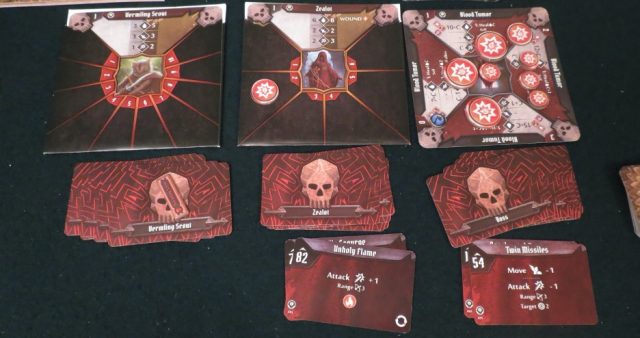
Enlarge / Another highlight is the way monsters activate and attack.
Dan Thurot
The emphasis on a campaign book explains both the improvements and the limitations of Jaws of the Lion. Upon opening the box, there’s a setup sheet explaining how to bag all the monster components. The very first page of the rulebook has you set up the first scenario. The character decks are sorted into small clusters of cards to ease players into the system. Everything is designed to get you over that initial hump and keep you moving through one scenario after another. Think of it like a drawbridge. Where previously you were expected to swim the moat and climb the battlements, now you’re welcomed through the front gate.
Yet some of what was so thrilling about Gloomhaven was that stiff challenge, the thrill of being able to claim you’d made that swim, survived that climb, and came out the other side breathing. This isn’t “true gamer” cred I’m talking about. It’s the joy of plunging into a system that’s playable but somewhat overgrown, of finding your own enjoyment in this vast box of playthings.
The process of focusing is also the process of narrowing. Jaws of the Lion is Gloomhaven made more focused and more narrow. It’s still cerebral, still clever, and still imaginative—and best for those who previously regarded the journey with intimidation rather than relish.

